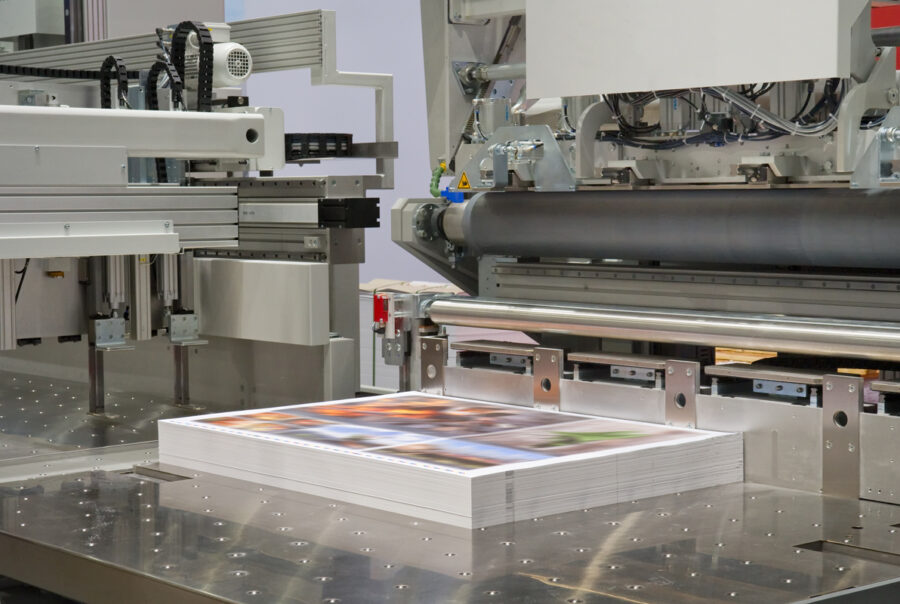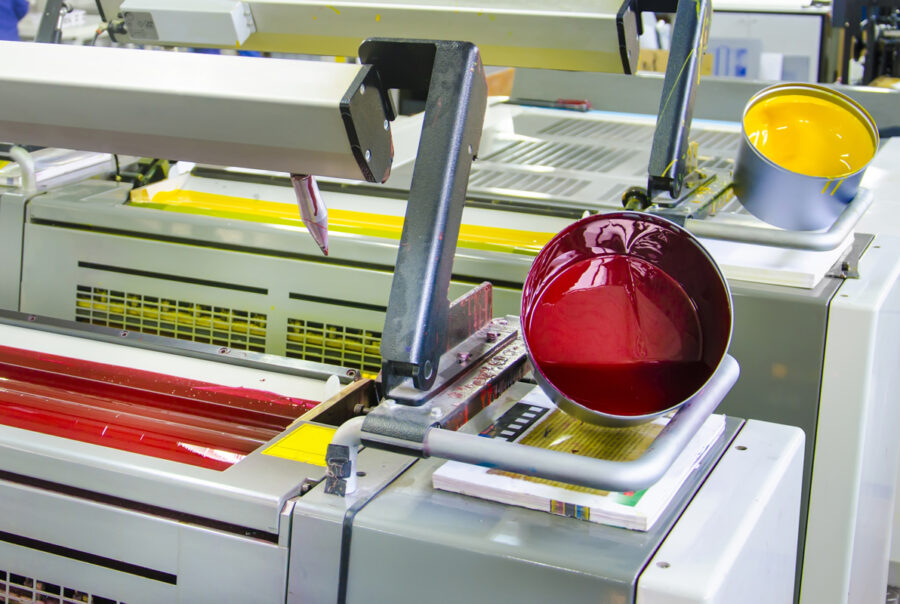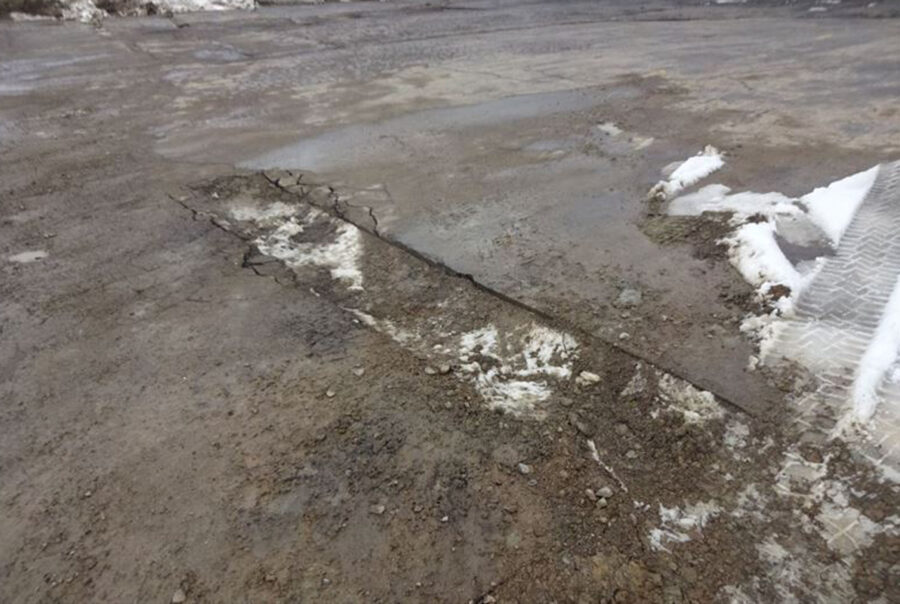Printing
This playbook is your go-to resource for understanding the coverage needs of printing businesses — from equipment and material risks to protections for custom jobs, delivery services, and client property.
The following playbook is intended to provide guidance on Merchants’ appetite and most desired risk characteristics. Your Merchants team is available to speak about the entirety of a risk that may have characteristics not exactly fitting our desirability.
We also encourage you to refer to Merchants Appetite Guide under the Resources/Tools menu of the Commercial Gateway in Merchants agent portal website for class-specific eligibility.
Description of Operations
Printers reproduce text and images onto paper or other materials using a master copy or template. Some specialize in printing newspapers, magazines, advertising materials, financial or legal documents for key customers; others offer their services to the general public. The processes may be limited to laser printing, as in quick print shops, or may involve the use of printing presses. The printing jobs will vary in number of copies, size of the paper, and type of binding. Paper quality, ink quality, and services provided vary by operation. Delivery service may be offered to customers.
Merchants Appetite
The following risk characteristics are intended to provide guidance on Merchants’ appetite. Your Merchants team is available to speak about the entirety of a risk that may have characteristics not exactly fitting our desirability. Refer to Merchants Appetite Guide under the Resources/Tools menu of the Commercial Gateway on merchantsgroup.com for class-specific eligibility.
Desirable Risks
- In business and under current ownership / management for 3 years or more
- Year-round operations
Ineligible
- Sales of directly imported goods
Exposures
Understand the key risks service providers face — and how each business type’s exposures can impact insurance coverage, potential claims, and safe daily operations.
Automobile Exposure
Automobile exposures may be limited to hired and non-owned for employees running errands. If the printer picks up its own supplies or delivers end products to customers, the exposure increases. If vehicles are provided to employees to take home, there must be a written policy regarding personal and permissive use. All drivers must have appropriate licenses and acceptable MVRs that are checked regularly. Drivers must be trained for the deliveries and vehicles they are handling. Vehicles should be maintained with records kept at a central location.
Business Interruption Exposure
Business interruption exposures can be high if foreign-made or specialized printing presses are used due to the length of time needed for repairs or replacement and the unavailability of backup resources.
Crime Exposure
Crime exposure is from employee dishonesty. Background checks, including criminal history, should be performed on all employees handling money. There must be a separation of duties between persons handling deposits and disbursements and reconciling bank statements. Physical inventories and audits should be conducted at least annually.
Inland Marine Exposure
Inland marine exposure is from accounts receivable if the printer offers credit, bailees for items belonging to customers, computers to transact sales and monitor inventory (and which may also include computer-operated machinery), equipment floater for forklifts, goods in transit if deliveries are made, and valuable papers and records for customers’ and vendors’ information. Some artwork will be done by computer graphic programs. Duplicates of all records and original artwork should be kept off site for easy replication.
Premises Liability Exposure
Premises liability exposures is generally low as public access is limited to designated waiting areas and offices. If tours are offered, the exposure increases. Slips and falls can be reduced through good housekeeping and maintenance. Aisles must be kept clear, and floor coverings must be in good condition. Steps and uneven floor surfaces should be prominently marked. Sufficient exits must be provided and be well marked with backup lighting systems in case of power failure. Parking areas and sidewalks should be in good repair and kept clear of ice and snow. There should be a disaster plan in place for unexpected emergencies. If the printer outsources some of its work, certificates of insurance should be maintained to verify that adequate limits of liability are carried.
Professional Liability Exposure
Professional liability exposure comes from printers’ errors and omissions which can range from blurry type to miskeying prices in an advertisement to missing a critical deadline. All copy to be printed, including changes, must be documented in writing and signed by the customer before the run begins.
Property Exposure
Property exposures are high due to the combination of flammable liquids, primarily inks, lacquers, and solvents, the large quantities of combustible paper stock, and the numerous ignition sources from the printing machinery and equipment. Electrical wiring must meet current codes and be adequate for the occupancy. Ongoing maintenance of equipment is critical as even a small fire can result in substantial damage. There should be automatic shutoffs to prevent machinery from overheating. Fire or explosion can result from the accumulation of dust particles from paper. Smoke detectors and fire suppression devices are highly recommended. Extension cords should not be used. Flammable liquids must be stored in a cool place away from heat sources with no more than one day’s supply in the processing area. Finished items should be stored separately from raw materials and the processing area. Recharging of forklifts must be in a well-ventilated area away from flammables. Smoking should be prohibited. To prevent theft, there should be appropriate security controls including physical barriers to prevent entrance to the premises after hours and an alarm system that reports directly to a central station or the police department.
Workers Compensation Exposure
Workers compensation exposure is high due to the use of chemicals, the operation of machinery, and lifting. Workers can be injured by electrical shocks, excessive heat, slips, and falls, back sprains from lifting, cuts, dust inhalation, foreign objects in the eye, hearing impairment from noise, and repetitive motion injuries. Workers should be trained in material lifting and the proper use of conveying devices. Continual standing can result in musculoskeletal disorders of the back, legs, or feet. Employees working with presses can be injured by fingers or hair being drawn into the machine or coming into contact with moving parts. Training is required for any employee operating machinery or forklifts. Guards on machinery must be maintained. Safety equipment is a must. Information regarding chemicals should be available to employees along with early warning signs of problems. Workstations should be ergonomically designed.
Risk-Smart Printing Service Businesses
Click each photo to see what makes it best-in-class — and how these features help minimize risk and reduce exposures in service-based environments.
Red Flags in the Field
Click each photo to learn what’s not-so-great — and how these conditions can increase risk, raise exposures, or lead to costly claims in service businesses.
Automatic Coverages
These built-in coverages come standard with our retail and service business policies, offering added protection for income, equipment, property, and more — all at no additional cost.
Accounts Receivable
Coverage for accounts receivable is provided at a limit of $25,000 on premises and $10,000 off premises. The on premises limit may be increased. This coverage is subject to the property deductible in the policy. This coverage protects against loss resulting from an inability to collect accounts receivable due to loss, damage, or destruction of books or records of accounts. The on premises limit may be increased.
Additional Insured by Contract, Agreement or Permit
Provides coverage to any person or organization when the named insured has agreed in a contract or agreement to name that person or organization as an insured on their policy. Automatically included on a blanket basis. Various other optional additional insured endorsements are available on a scheduled or blanket basis.
Annual Aggregate Limit Per Location
This policy conditions amends the General Aggregate Limit to apply separately to each location owned by or rented to the insured.
Damage to Premises Rented to You (Fire Legal Liability)
Business Liability coverage for damage because of property damage to a premises while rented to the insured or temporarily occupied by the insured with permission of the owner is provided at a limit of $300,000 unless a higher limit of insurance is shown in the policy declarations.
Debris Removal
Coverage applies for expense to remove debris of covered property and other debris that is on the described premises, when such debris is caused by or results from a covered cause of loss that occurs during the policy period. The expenses are only paid if they are reported within 180 days of the loss or damage. The coverage limit is 25% of the direct physical loss plus $25,000.
Employee Dishonesty
Coverage is included for loss or damage to Business Personal Property and Money and Securities resulting from dishonest acts committed by any of the insured’s employee. Coverage limit is $25,000 subject to a $250 deductible. Higher limits may be purchased.
Forgery or Alteration
$10,000 Provides coverage when someone other than the employee or owner forges a signature on a check or other monetary instrument in order to obtain money that belongs to the insured. Forgery by an employee is covered in the Employee Dishonesty coverage. Higher limits are available.
Identity Recovery
In the event of a covered identify theft, coverage for case management service and expense reimbursement up to an annual aggregate limit of $15,000 is provided. The identity theft must involve a insured under the policy, must be first discovered during the policy period and must be reported within 60 days after it is first discovered.
Lock & Key Replacement
Coverage applies for the cost to repair or replace locks or keys at the described premises due to theft of keys from your premises. The limit for this coverage is $500 subject to a per occurrence deductible of $50.A limit of $500 applies to customers keys.
Money & Securities
Coverage for money, securities and credit card slips is included at a limit of $25,000 inside the premises and $5,000 outside the premises subject to a $250 deductible. Higher limits may be purchased. The loss of money and securities must result directly from theft, disappearance or destruction. Additional limits for inside the premises coverage are available.
Newly Acquired or Constructed Property
If the policy covers a building, that coverage can be extended to apply to new buildings while being built on the described premises and buildings the insured acquires at a premises other than the described premises that are intended for a similar use as the building described in the policy or to be used as a warehouse. If the policy covers business personal property that coverage may be extended to such property the insured acquires at any location acquired or at a newly constructed building. This extension does not apply to personal property temporarily acquired in the course of installing or performing work on such property. Limit provided is $500,000 for building and $250,000 for business personal property.
Pollutant Clean Up and Removal
Coverage is provided to pay the insured’s expense to extract pollutants from land or water at the described premises if the discharge, dispersal, seepage, migration, release or escape of the pollutants is caused by or results from a Covered Cause of Loss that occurs during the policy period. The expenses will only be paid if they are reported in writing within 180 days from the date on which the loss occurs. The most that will be paid is $25,000 for all expenses arising out of a loss occurring during each separate 12 month period of the policy.
Utility Service - Direct Damage & Time Element
Coverage is provided for loss or damage to covered property caused by the interruption of service to the described premises. The interruption of utility services must result from direct physical loss or damage by a covered cause of loss to the insured property. Utility services include water supply, communication supply and power supply. The limit for direct damage is $25,000 and $25,000 for loss of business income or extra expense. Higher limits are available.
Valuable Papers
Coverage applies to direct physical loss o damage to valuable papers and records owned by the insured or that are in the insured’s care, custody or control caused by or resulting from a covered cause of loss. This coverage includes the cost to research, replace or restore the lost information on valuable papers and records for which duplicates do not exist. The limit for this coverage is $25,000 on premises and $10,000 off premises. The on premises limit may be increased.
Voluntary Property Damage
Voluntary Property Damage coverage is provided for unintentional property damage to the property of others caused by the insured or while the property is in the insured’s possession and the damage is arising out of the operations described in the policy. The coverage limit is $5,000 per occurrence/$25,000 aggregate with a $500 per claim deductible.
Water Back-Up and Sump Overflow
Coverage is provided for direct damage or loss to covered property caused by or resulting from water which backs up through or overflows from a sump, sump pump or related equipment. The cost of repairing or replacing the sump pump or its related equipment is not covered if the loss is caused by a mechanical breakdown. Coverage does not apply if the insured fails to keep a sump pump in proper working condition or fails to perform routine maintenance or repair necessary to keep a sewer or drain free of obstructions or the sump pump failure is caused by or results from failure of power unless the policy is amended to cover power failure. A limit of $25,000 applies.
Helpful Resources
Navigate to “Merchants On-Demand” from the homepage of your Merchants agent portal website to access flyers for your reference, as well as flyers you can distribute to clients.







